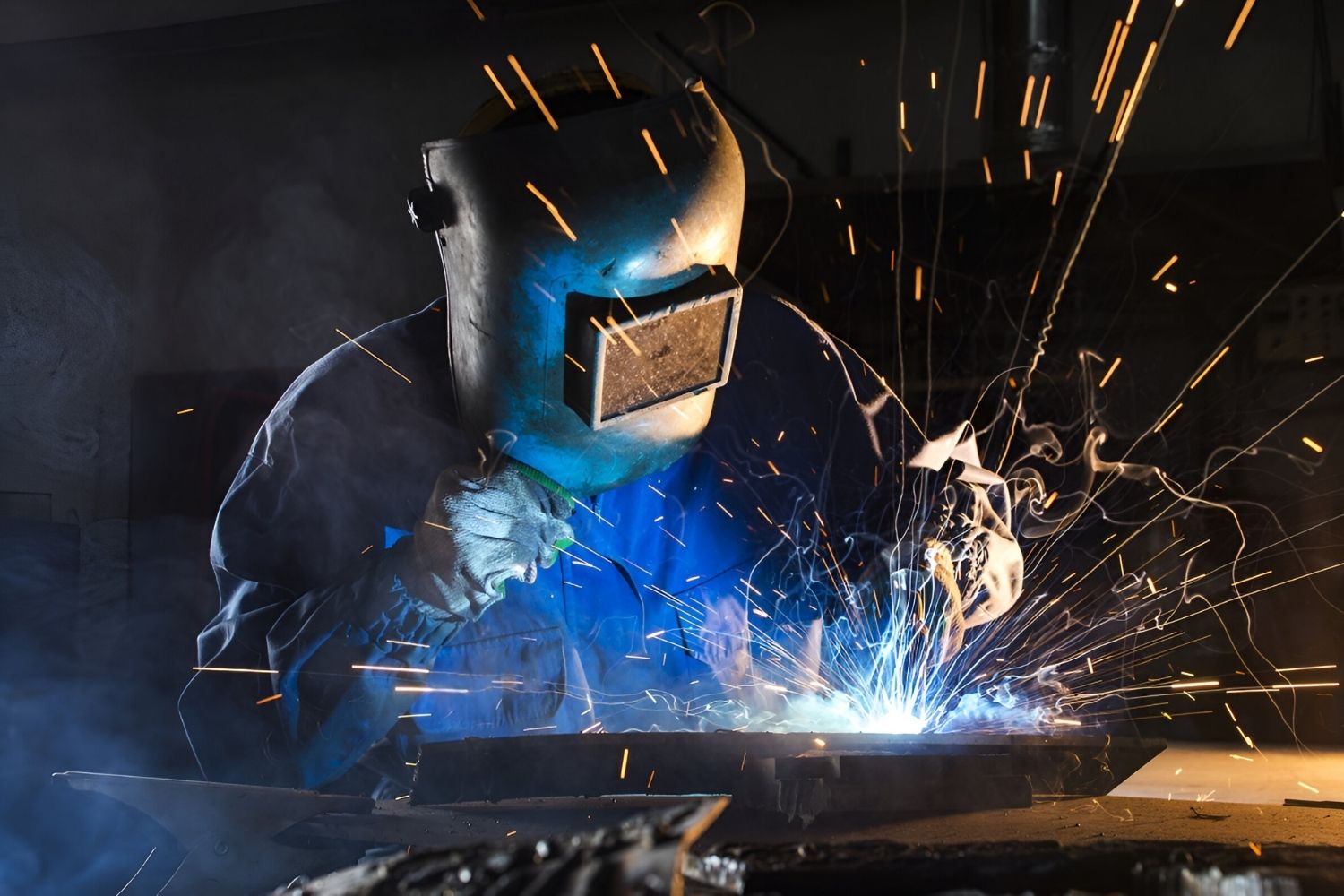
Fabrication is a process that transforms raw materials into finished products through cutting, bending, and assembling. Did you know that fabrication is essential in creating everything from skyscrapers to tiny electronic components? This intricate process involves various techniques like welding, machining, and casting. But what makes fabrication so fascinating? It's the blend of art and science, requiring both creativity and precision. Whether you're curious about how your smartphone was made or the construction of a bridge, understanding fabrication gives insight into the backbone of modern industry. Ready to dive into the world of fabrication? Here are 34 intriguing facts that will broaden your knowledge and appreciation for this vital craft.
What is Fabrication?
Fabrication involves creating products by cutting, bending, and assembling raw materials. This process is essential in various industries, from construction to electronics. Let's dive into some fascinating facts about fabrication.
-
Fabrication vs. Manufacturing: Fabrication focuses on creating parts and structures, while manufacturing involves producing finished goods from these parts.
-
Materials Used: Common materials include metals like steel and aluminum, as well as plastics and composites.
-
Cutting Techniques: Methods like laser cutting, water jet cutting, and plasma cutting are used to shape materials.
-
Bending Methods: Press brakes and tube benders are tools used to bend materials into desired shapes.
-
Assembly Processes: Welding, riveting, and adhesive bonding are common ways to assemble fabricated parts.
-
Sheet Metal Fabrication: This involves creating parts from thin metal sheets, often used in automotive and aerospace industries.
Historical Background of Fabrication
Fabrication has a rich history, evolving from simple hand tools to advanced machinery. Understanding its past helps appreciate its current complexity.
-
Ancient Techniques: Early fabrication involved forging and casting metals using rudimentary tools.
-
Industrial Revolution: The 18th century saw significant advancements with the introduction of steam-powered machinery.
-
20th Century Innovations: The development of CNC (Computer Numerical Control) machines revolutionized precision and efficiency.
-
Modern Day: Today, fabrication incorporates robotics and automation for increased productivity.
Types of Fabrication
Different types of fabrication cater to various needs and industries. Each type has unique processes and applications.
-
Structural Fabrication: Used in constructing buildings, bridges, and other large structures.
-
Architectural Fabrication: Focuses on aesthetic elements like facades, railings, and decorative pieces.
-
Industrial Fabrication: Involves creating parts for machinery and equipment used in manufacturing.
-
Custom Fabrication: Tailored to specific requirements, often for unique or one-off projects.
Tools and Equipment in Fabrication
The tools and equipment used in fabrication are as diverse as the materials and processes themselves. These tools ensure precision and efficiency.
-
CNC Machines: Automated machines that follow programmed instructions to cut and shape materials.
-
Welding Machines: Essential for joining metal parts, with types including MIG, TIG, and stick welders.
-
Press Brakes: Used to bend sheet metal into precise angles and shapes.
-
Laser Cutters: Provide high precision and are used for intricate designs and patterns.
-
Water Jet Cutters: Use high-pressure water to cut through materials without generating heat.
-
Plasma Cutters: Utilize electrically conductive gas to cut through thick metals.
Applications of Fabrication
Fabrication plays a crucial role in various industries, contributing to the creation of countless products and structures.
-
Construction: Fabricated steel beams and columns form the backbone of modern buildings.
-
Automotive: Car frames, panels, and components are often fabricated from metal and plastic.
-
Aerospace: Aircraft parts, including wings and fuselages, rely on precise fabrication techniques.
-
Electronics: Fabrication is used to create enclosures and components for electronic devices.
-
Medical Devices: Surgical instruments and medical equipment often involve intricate fabrication processes.
Environmental Impact of Fabrication
Fabrication processes can have significant environmental impacts, but advancements are being made to reduce these effects.
-
Waste Generation: Cutting and shaping materials often produce waste, which needs proper disposal or recycling.
-
Energy Consumption: Fabrication processes can be energy-intensive, contributing to carbon emissions.
-
Pollution: Some fabrication methods, like welding, can release harmful fumes and pollutants.
-
Sustainable Practices: Increasing use of recycled materials and energy-efficient machinery helps mitigate environmental impact.
-
Green Fabrication: Innovations like additive manufacturing (3D printing) reduce waste and energy use.
Future of Fabrication
The future of fabrication looks promising, with technological advancements paving the way for more efficient and sustainable practices.
-
Automation: Increased use of robots and AI in fabrication processes for precision and speed.
-
3D Printing: Additive manufacturing is revolutionizing how parts are made, offering customization and reducing waste.
-
Smart Materials: Development of materials that can change properties in response to environmental conditions.
-
Sustainability: Ongoing efforts to make fabrication more eco-friendly through recycling and energy-efficient technologies.
Final Fabrication Facts
Fabrication isn't just about creating objects; it's about innovation, creativity, and problem-solving. From ancient blacksmiths to modern 3D printing, fabrication has shaped our world. Knowing these 34 facts gives you a glimpse into the fascinating world of making things. Whether it's the precision of CNC machines or the artistry of handcrafted items, fabrication blends science and art.
Understanding the materials, techniques, and history behind fabrication can inspire new ideas and appreciation for the objects around us. Next time you see a beautifully crafted piece of furniture or a complex machine, you'll know the incredible journey it took to get there.
Keep exploring and learning about fabrication. Who knows? You might find yourself inspired to create something amazing.
Was this page helpful?
Our commitment to delivering trustworthy and engaging content is at the heart of what we do. Each fact on our site is contributed by real users like you, bringing a wealth of diverse insights and information. To ensure the highest standards of accuracy and reliability, our dedicated editors meticulously review each submission. This process guarantees that the facts we share are not only fascinating but also credible. Trust in our commitment to quality and authenticity as you explore and learn with us.
